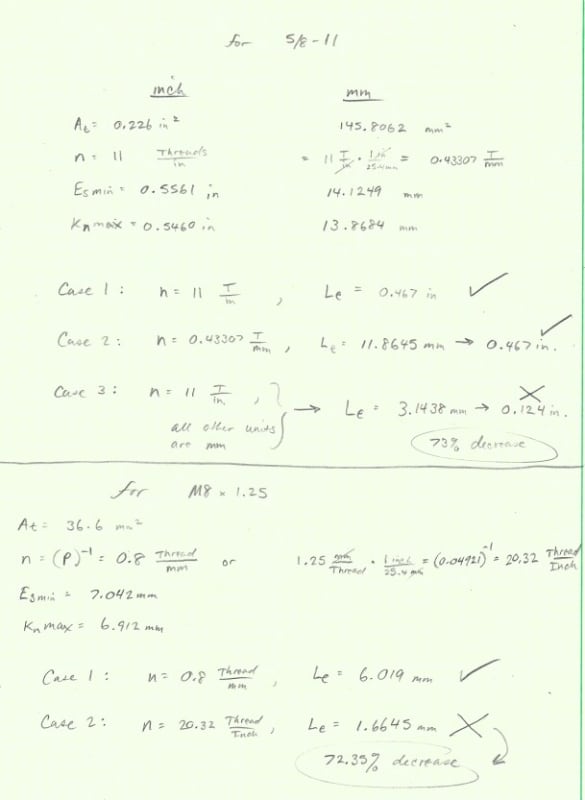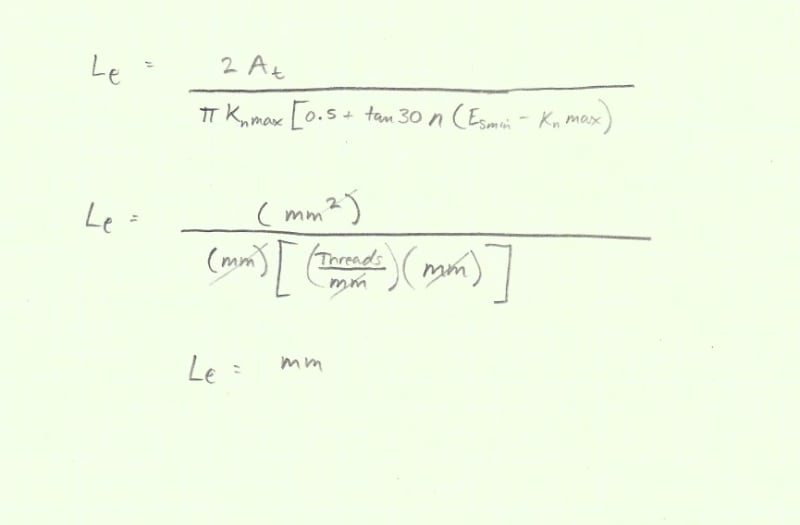I know this question may have been asked in some form at some time but I can't seem to find an answer.
I am wondering what the typical method for thread engagement length is for metric bolts of differing materials? I do have Bickford as a reference and also Machinery's but both have essentially the same content with different notation. The issue is that the term for "n" (cited in both texts as 'number of threads per inch') leaves you with mixed units (per inch) if you use metric dimensions for your threads. If I were to convert TPI to Pitch in inches, then I feel like maybe I have violated the relationship. I suppose you could alternatively convert everything to inches but that seems like a stretch as well.
I have tried to find a readable copy of VDI2230 as some have suggested, but I couldn't, its all ink-blobs to me.
Thanks for your help.

I am wondering what the typical method for thread engagement length is for metric bolts of differing materials? I do have Bickford as a reference and also Machinery's but both have essentially the same content with different notation. The issue is that the term for "n" (cited in both texts as 'number of threads per inch') leaves you with mixed units (per inch) if you use metric dimensions for your threads. If I were to convert TPI to Pitch in inches, then I feel like maybe I have violated the relationship. I suppose you could alternatively convert everything to inches but that seems like a stretch as well.
I have tried to find a readable copy of VDI2230 as some have suggested, but I couldn't, its all ink-blobs to me.
Thanks for your help.


![[bigsmile] [bigsmile] [bigsmile]](/data/assets/smilies/bigsmile.gif)


